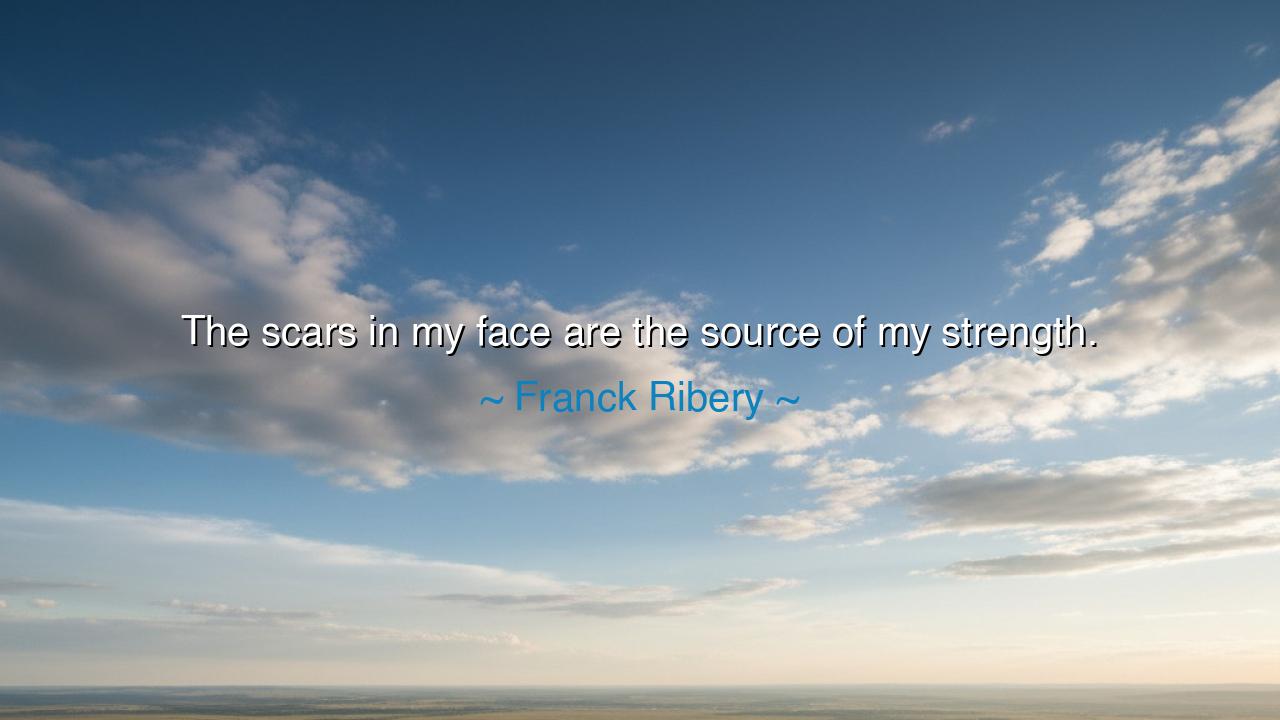
The scars in my face are the source of my strength.






Franck Ribéry once proclaimed: “The scars in my face are the source of my strength.” These words, forged in pain yet spoken with triumph, carry the eternal wisdom that suffering can be transmuted into power. Ribéry, scarred in childhood by a terrible accident, could have lived his life in shame or bitterness. Instead, he chose the ancient path of the warrior: to take what the world gave him as a wound and transform it into the very emblem of his courage. His scars, visible to all, became not a mark of weakness, but a banner of resilience.
The ancients knew this truth well. The Spartans bore their wounds not with embarrassment but with pride, for each scar told a story of survival, of battle endured. In Homer’s epics, the recognition of Odysseus himself comes not from his crown or armor, but from the old scar upon his leg—a sign of his trials, his adventures, and his unbroken spirit. So too with Ribéry: his scars are not deformities to be hidden, but inscriptions carved upon his flesh, declaring to the world that he has suffered, yet has risen stronger.
In his words we hear the echo of a greater truth: that the wounds life inflicts upon us—whether seen upon the skin or buried deep in the heart—may either enslave us or empower us. Many shrink before their scars, seeking to conceal them. But Ribéry’s courage was to claim them as his strength, to say: “This is who I am. This is the proof that I endured.” It is not the absence of scars that makes one mighty, but the ability to rise with them, unashamed.
History offers countless examples of this transformation. Consider Abraham Lincoln, who carried not scars of flesh but scars of spirit: defeats in politics, the loss of children, the burden of civil war. Yet he turned his sorrows into compassion and unshakable resolve, guiding his nation through its darkest hour. Or recall the Japanese tradition of kintsugi, in which broken pottery is repaired with gold, the cracks not hidden but glorified, showing that what was once shattered can become even more beautiful. Ribéry, too, embodies this spirit of kintsugi: his face is not “broken,” but gilded by endurance.
The lesson is clear and timeless: do not despise your scars, whether of body or of soul. They are your teachers, your companions, the lines in the story of your becoming. To pretend they do not exist is to deny your journey. To hide them is to dim your light. But to embrace them, to declare as Ribéry did that they are your strength, is to transform pain into power, loss into victory, and shame into pride.
Practically, this means facing your wounds with courage. Reflect upon the trials that have marked you. Write them down, not as failures but as victories—each one a battle you survived. When doubt arises, look back upon these scars and remember: you have endured worse, and you are still standing. Share your story with others, for in your scars they may find the courage to accept their own.
So let Ribéry’s words endure as teaching for the generations: the scars upon your body and soul are not chains, but wings. They remind you not of weakness, but of the fires you have walked through. Hold them high, as a warrior holds his shield, and let them shine as proof that you have faced life’s cruelty and turned it into strength. For those who accept their scars as part of themselves will never walk in fear, but in the radiance of survival.






AAdministratorAdministrator
Welcome, honored guests. Please leave a comment, we will respond soon